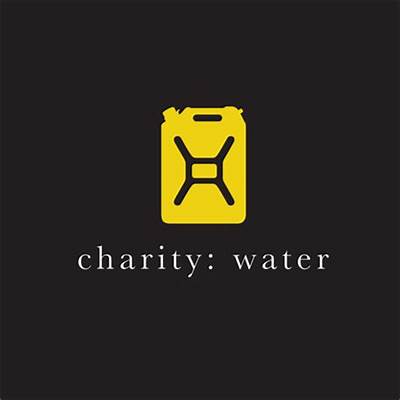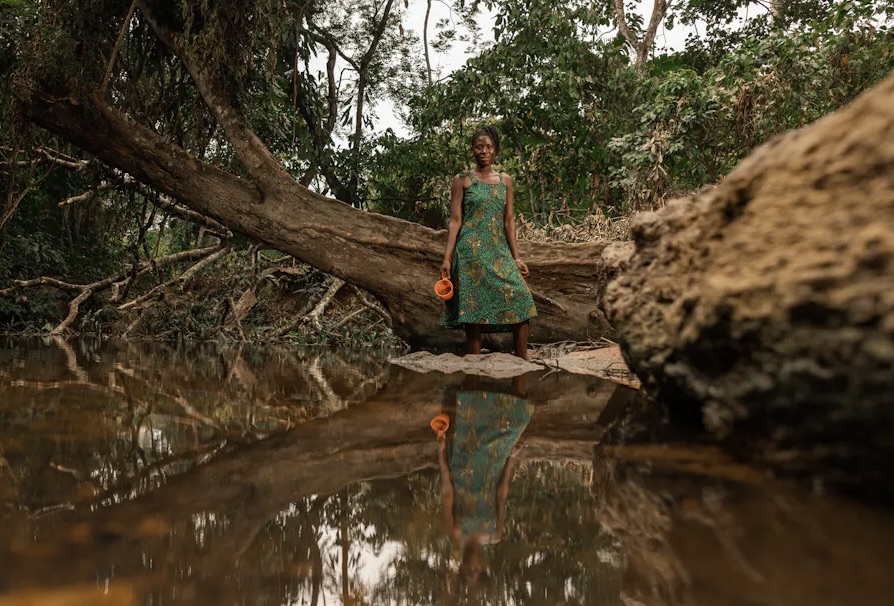STORIES FROM THE FIELD
Between “Before” and “After”
"Good things come to those who wait. Great things come to those who work."
by Mercy Weaver
For those who live in the Northern Hemisphere, summer is here and ready for anything. The days are long and warm. The nights are cool and promising.
If you enjoy the occasional summer hike, run, or stroll, you may have experienced the following:
You’re halfway through your evening walk, feeling heady with the golden glow of the summer sun. You’re admiring the trees, parks, or homes that line your route, feeling wonder with every step.
You’re also feeling warmer with every step. Suddenly, you realize you’ve forgotten your water bottle. (If you’re anything like me, it’s covered in stickers and scuffs, each with its own story.)
You might feel irritated with yourself for neglecting to hydrate sooner. Maybe the heat loses a bit of its misty magic. You start to shift from bliss to blame — “Why didn’t [Insert Partner/Friend here] remind you to grab some water on your way out the door?”
You realize the glow of summer is actually just sweat.
It’s a familiar scene, and never enjoyable. Still, you probably won’t decide your best bet is to sip from the puddle you narrowly avoided stepping in. You probably don’t stoop down to scoop a handful of runoff from the street.
You don’t abandon the hiking trail and descend a cacti-studded ravine just to reach the stream below. You don’t slip through the fence around the golf course up ahead to slurp greedily from the idyllic water hazards. You know that you can wait.
Why? Because you know there’s water at home.
Your filter or faucet sits patiently, prepared to receive you whenever you stumble through the door, pleasantly exhausted. If the situation is dire, you can stop to buy a bottle of mineral/purified/flavored/sparkling water from a convenience store or bodega.
But what if there was no water at home? What if the lake covered by a film of insects or the river frequented by wildlife were your best and only options?
What if clean water had been a distant dream for decades, always just beyond your town or neighborhood’s reach? What if you’d watched your grandmother, mother, and daughters face the same perilous journey each day? What if dirty water was as constant through the generations as your family’s rounded nose, unruly hair, or blue eyes?
Consuming your days. Twisting your belly. Stealing your future.
Could you wait then?
Could you wait well?
In a forested community in southeastern Sierra Leone, the wait was generational. Friends and neighbors bonded through similar stories of lost children and frantic trips to the nearest clinic — a four-mile, three-hour trek. Parents and grandparents shared the same fears for the next generation: What if nothing ever changed? What if clean water never came? And, even if it did, who would suffer sickness and loss in the meantime?
Several years ago, a different nonprofit planned to bring clean water to their community. People felt their spirits rise and the tide shift. But the organization decided it wouldn’t be possible to reach their community: the main road wasn’t equipped for large vehicles like a drilling rig.
After decades of disease, another closed door.
Without a waterpoint, residents would continue sourcing their drinking water from the river: a murky, shaded stream visibly infested with bugs and worms.
A few years later, one of our local partners visited the area to assess it as a possible water project site. Thomas, the Rural WASH Program Manager, was shocked. The river was one of the worst he’d seen.
The water quality was so poor, he asked, “Are you sure this is where you get your water from?”
In confirmation, the Chief drank directly from the river.
Thomas was incredulous. Many rural community leaders designate a portion of the river as “drinking water.” These areas will be protected from human contamination by rules against wearing shoes, defecating, bathing, or cleaning.
This river was completely unprotected.
Not that any restrictions would’ve made a significant difference.
The river was downhill from a cacao farm people often used for open defecation. (Globally, more people have access to a mobile phone than a toilet.1)
Rainwater runoff from the cacao farm trickled directly into the river, already ominous shades of brown and yellow. Red worms clung to layers of rotting branches and stones beneath the surface, a breeding ground for insects and parasites.
The effects of these contaminants on their sole source of drinking water were evident and deadly. Families suffered from frequent battles with diarrhea, rashes, cholera, and malaria.
Snakes were known to sun themselves on rocks or slip stealthily through the water. Multiple people had been bitten.
When we share stories from the field, we often keep it short and straightforward. The message is clear: There used to be dirty water, but now there isn’t, and life is better for it.
Supporters of any global cause — we like to think of you as our partners in progress, or co-conspirators in changing the world — aren’t always given a behind-the-scenes. They’re shown a carefully curated highlight reel.
But our local partners and the communities they serve don’t snap their fingers and complete a water project, skimming over hardship as effortlessly as you read this. They don’t get to skip to the end. They spend years in the trenches.
So, what happens between dirty water and clean water? What happens in the waiting? The space between trial and triumph has something beautiful to teach us.
This community in Sierra Leone knew they couldn’t accept the status quo any longer. Countless generations may have come and gone with only dirty water, but it would be different for their children. It would be different for their grandchildren.
If another opportunity came for them to receive clean water, they wouldn’t let it (literally) pass them by. A drilling team had to be able to reach them.
But they would have to pave the way themselves. So, they rolled up their sleeves and prepared to fight for their future. Plans were laid. Teams were assembled. Tools were stockpiled.
And then, the real work began.
They spent two years preparing their water point. Two years.
They spent one year cutting down trees and clearing the brush. A second year was spent filling in a swamp.
This wasn’t crunching the numbers in a cubicle. This was backbreaking work beneath an unforgiving sun. This was heaving heavy stones and digging up stubborn roots. This was two years of dust and heat and sweat and dirt beneath their fingernails.
Hope has been described as “the thing with feathers”. But in Sierra Leone, hope looked like chipped shovels and unbroken wills. Hope was formidable and fierce and anything but flighty.
Hope was protective, like a mother who refuses to see her children spend another moment ill.
Hope was inexhaustible, like a father working tirelessly to provide for his family.
Hope was hungry for opportunity, like children racing off to school in the morning.
Hope was unbeatable, like a leader with a clear vision and a hardworking team.
25-year-old Ibrahim worked alongside a team of two dozen young men and women on the road improvements. But it was a shared effort. The older men would offer encouragement and praise throughout their long, hard days. The older women brought food and treats.
Still, Ibrahim worried the collective efforts of his community would be futile.
“I had some discouragement because I was not sure. I am doing this work so that development can come, but I was not too sure. After the road, will the development come or will it not come? Will I have clean water or will I not have clean water?”
His worry was reasonable. For decades, mothers, fathers, children, neighbors, and friends paid the price for dirty water. They bore the cost on their bodies, schedules, opportunities, and incomes.
For two years, they spent their precious spare time investing in the future they’d always deserved.
Then, on a sunny day in April, reliable access to clean water finally arrived. Families danced and rejoiced. Neighbors embraced and cheered. Happy tears flowed freely — especially from our team.
A 49-year-old mother of three named Hawa said, “Because of this development, I am so happy: I don’t even have the words to express myself. I am so happy.
“If we get clean water, we are moving from poverty.”
“The surrounding villages have been laughing at us because we don’t have clean water. I am so ready to say, ‘Look at us. We have clean water now!’”
Her newfound feeling of freedom and peace of mind were echoed dozens of times over in the stories of the families we met. People couldn’t stop thanking our local partners and charity: water.
We felt welcomed and appreciated but, at the same time, somewhat undeserving.
charity: water may have technically funded the drilling team and a new waterpoint, but it was clear we hadn’t made the most significant investment. They did. With every tree cleared, marsh filled, and inch of road reinforced, the people of Sierra Leone were storing up opportunity and health for their futures. We were just rising to their hopeful, hardworking occasion. (And happy to be invited at all.)
The industry term used to describe the people who receive humanitarian intervention is “beneficiaries.” It’s fair, to a point. When ethics and sustainability are prioritized, people clearly benefit from investments made in clean water, infrastructure, or education.
But at charity: water, we refer to the people we meet by name. Otherwise, they’re known as “agents of change.”
Why? Because every person we’ve met in our trips to the field has been wholeheartedly invested in the growth, development, and health of their communities. They’ve been generous with their time, dreams, and talents. They’ve been unwavering in their commitment to clean water and each other.
Every $1 given to water and hygiene generates $4.30 in economic return.2
But beyond the facts and figures — all of which point to clean water as a catalyst for economic growth and social good — are the hopes and dreams of the people we’ve met.
The mothers like Hawa who won’t go to bed worrying about their children’s safety. The daughters who will be able to finish school. The husbands like Ibrahim who will see the outcome of their efforts positively impact the lives of neighbors and friends. The communities suddenly free from poverty, hunger, and disease. The childhoods that will be full of play.
Your generosity toward rural communities is always multiplied by the people who call it home. We’ve seen it a hundred times over, and we know it’s true. Sierra Leone is just one beautiful example.
So, what are you waiting for? Let’s change the world.
Right now, 703 million people are waiting for clean water. In the meantime, they’re working with intense focus and radical hope toward dirty water’s last day. You can help end their wait for water. Join The Spring, our monthly giving community, to work with us toward an end to the global water crisis every single month. It only costs $40 to bring one person lifesaving access to clean water, but you can join for just $5/month.


